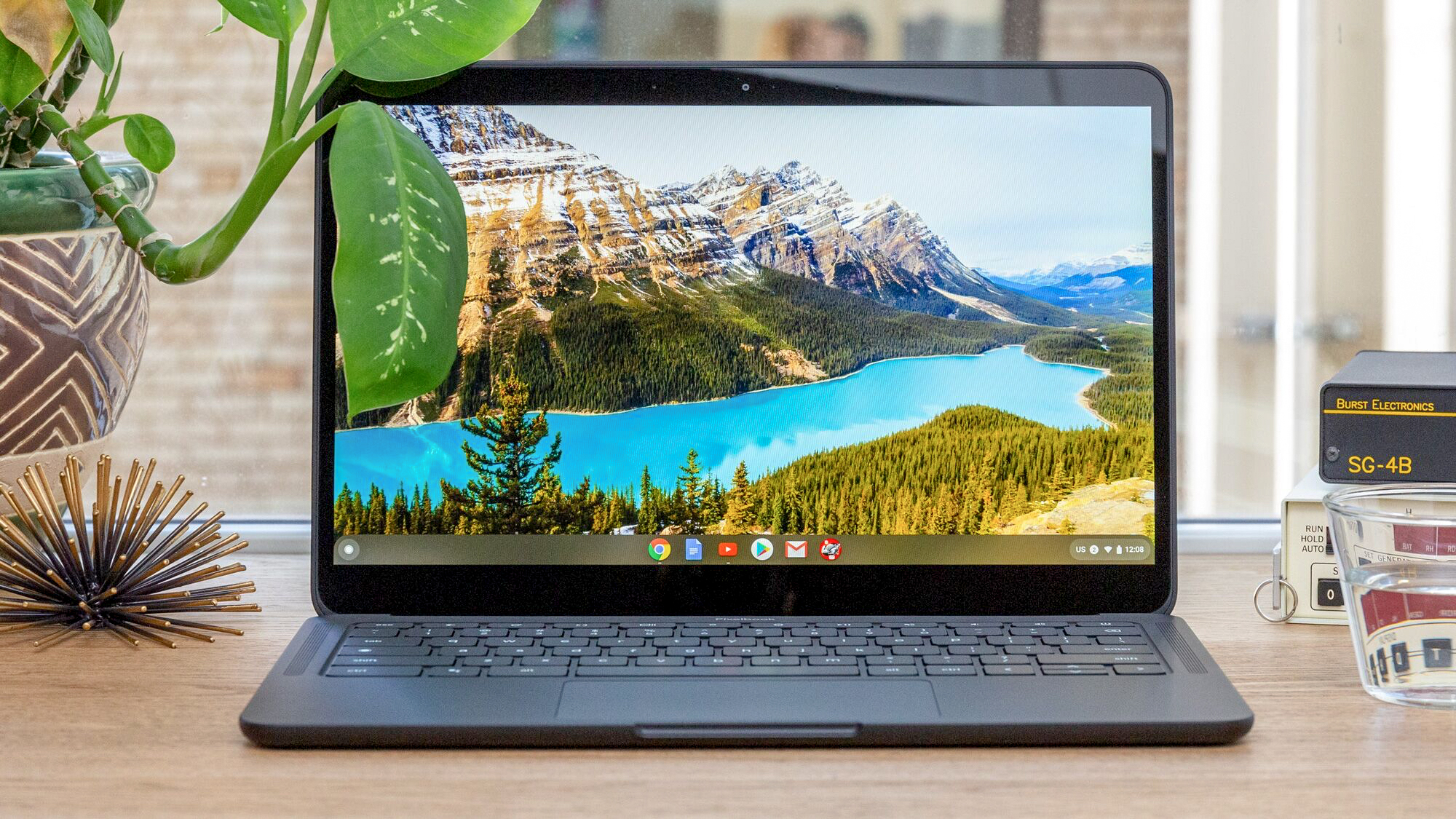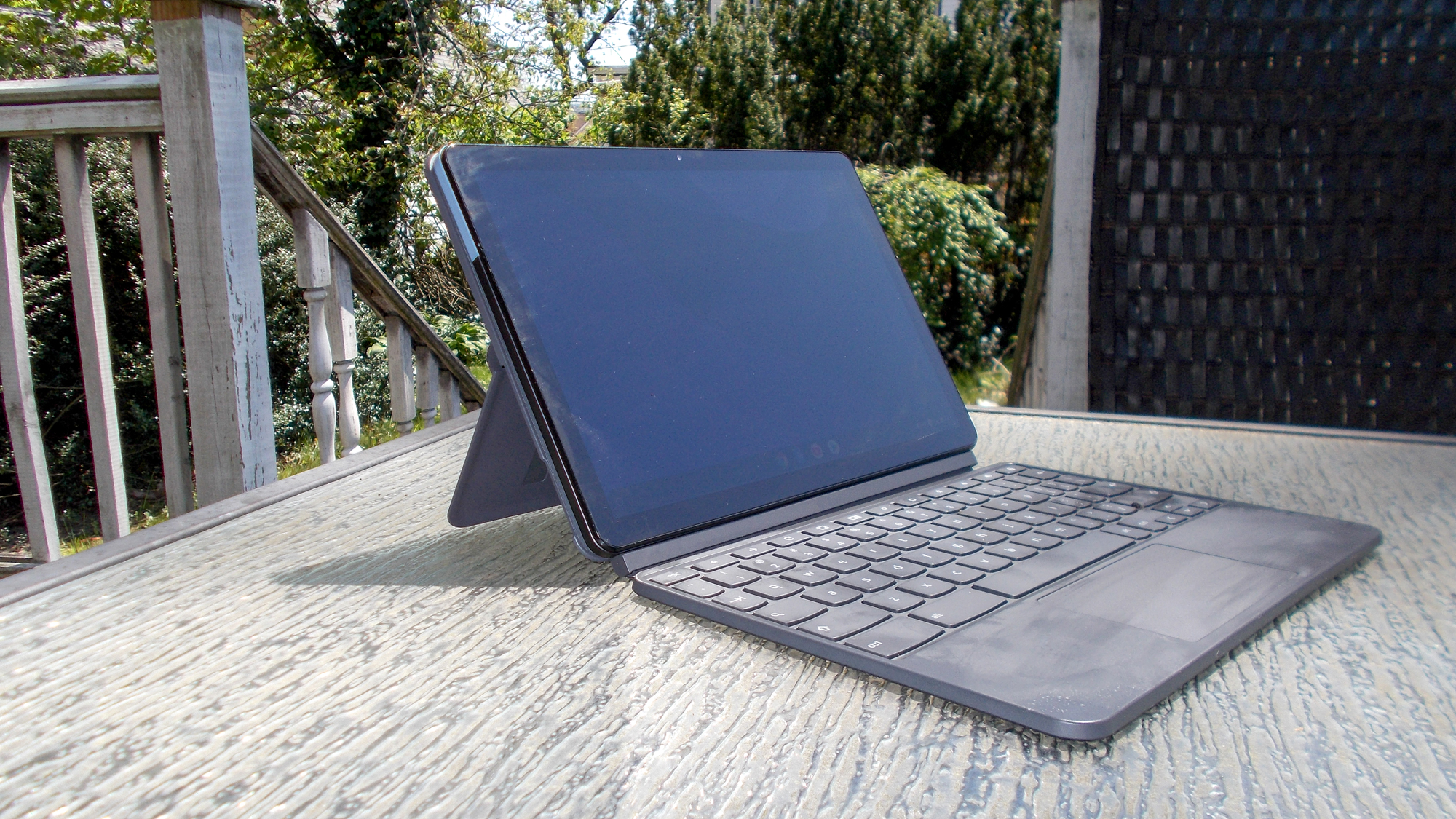Building the ultimate laptop for accessibility: Features to help those with disabilities
It's time to make laptops that can be used by everyone

People are rightfully excited about Apple’s M1 MacBook, Intel 11th Gen CPUs, and AMD chips in Chromebooks, but what about laptop design for the disabled? According to the World Health Organization, 15% of the population, or 1 billion people, have a disability, and 2% to 4% of that number has significant disabilities. Yet, idealized depictions of the future often have wild, stylish gadgets that are easy for everyone to use. In order to create such a future, we have to explore how the disabled — and therefore, how everyone — can benefit from consumer technology.
On a pragmatic level, the elevators built for the disabled are also used by mothers pushing strollers, those moving cargo, people with injuries, but on an abstract level, designing for the disabled can result in a happy accident. Vinton Cerf wanted to share documents instead of talking on the phone because he was hard of hearing, and he became known as the “Father of the Internet." This is one reason why a universal architecture is crucial in laptops, phones, gaming, wearables, fitness, and autonomous vehicles. Below are some ideas for the “ultimate laptop for the disabled".
Unlock and loaded
How does somebody with one arm or dexterity issues open their laptop? With one hand would be the easiest solution. Thankfully, the Google Pixelbook Go has nearly mastered this feature with its fluid hinge and two rubber strips across the bottom, and it should become a standard in the laptop industry. Of course, the best solution would be a spring-loaded mechanism that lifts the screen when a closed laptop is pressed down upon, but that may be wishful thinking.
Another element to consider before someone starts computing is how to unlock the laptop. This is a topic of debate for many: fingerprint reader or face unlock? For the disabled, though, as well as many others, it’s not a debate -- face unlock is the winner. What if you have no arms, or have a muscular problem and can’t lift them? Mistakenly recognizing certain colors, bone structures are legitimate privacy concerns with face unlock’s accuracy. And while you can’t unlock most smartphones while wearing a face mask, the technology is only going to get better.
Read my lips
In the past, companies like Google have used cameras in phones to read a user’s lips and improve speech recognition, but the attempt was deemed unsuccessful. However, after a year of Zoom calls, we expect built-in cameras on laptops to get clearer and sharper. Plus, if there was a "read lips" mode on a laptop, the user would know to look into the camera when talking, making it easier for the AI to see oral movements. If lip-reading technology augmented the existing speech recognition algorithms, this newfound precision could prove to be a boon for the disabled and the general public.
While we’re on the topic of software, every laptop should come with a dark mode pre-installed to prevent eye strain, along with customizable color options for optimal contrast. Yes, this is the case for many laptops, but some websites and apps haven’t adjusted to the color scheme, making the site hard to read. Worse yet, some flat-out don’t offer it. The universal adoption of a caption setting is a positive sign, but it’s not perfect. And screen readers can be tediously frustrating as they read every ad or any unimportant text on the screen. To mitigate this, some programs allow the user to use the cursor to highlight the text they want read, but what if someone can’t use a mouse or trackpad? That’s why an extension like "Read Aloud" helps because it reads only the webpage’s whole article. It's a feature we also think should be pre-installed on all laptops.
Larger keyboards, relocated speakers
I am looking at my keyboard, and I’m staring at two "Shift" keys, two "Command" keys, two "Option" keys, and a "\ |” key that I have never used. At the risk of sounding anti-ambidextrous, it seems like a user could adapt to having one of those keys on either side of the keyboard. This would create more space on the keyboard, resulting in bigger keys to hit. This may seem like it wouldn’t make a huge difference, but in the disabled community, a few millimeters can make a world of difference. It would increase a laptop’s utility for all by making typing your sci-fi novel and playing a round of Fall Guys easier, as well as future-proofing the keyboard if users have an injury or inevitable changes due to aging.
Sign up to receive The Snapshot, a free special dispatch from Laptop Mag, in your inbox.
There is a way to make the keys even bigger, though. Speakers are sometimes placed along the keyboard’s edges. However, if they are pulled below the keyboard, it can be stretched farther, giving users even larger, more tactile keys. What about those speakers? Well, space needs to remain for right and left-handed users to rest their wrists, so consolidate the speakers into round grills just below the keyboard. This would have dual benefits: the speakers would be closer to the individual using the laptop, making The Weeknd’s tunes louder for the hard of hearing, and completely deaf people could turn on a haptic feedback option to feel “Blinding Lights” vibrations on their wrist without the sensation being muddled. A bio-resin chassis like the Pixel 5 would not only be good for the environment but would also be sensitive to those who form rashes easily or have a skin allergy.
Has Your Back Ever Bothered You? I Know Mine Has
With the increase of detachable screens on laptops, like the Microsoft Surface Pro 7, Lenovo Chromebook Duet, and iPad Pro with its Magic Keyboard, one wonders what possibilities could arise for the disabled. A simple neck on the outside of a laptop would be a great addition, permitting users to adjust the screen height to whatever feels comfortable. This innovation would be great for users of various wheelchair heights, but it would additionally upgrade general posture. A person wouldn’t have to hunch over their keyboard; they could sit at a high stool or low table, and, if the neck had a hinge, they could tilt the screen to view content.
Multiple USB-C ports on both sides of a laptop are essential for the disabled because they often need devices like a Braille keyboard to operate their laptop (Why should they have to pay extra for a USB-C hub on an all-in-one device?). This issue could be aided by moving the charging port around the corner, from the side to the back. A headphone jack on the side near the laptop’s front would help the blind and those with low vision because Bluetooth headphones lag behind screen readers used for navigation compared to hardwired headphones. Bluetooth also saps customized device’s batteries faster because they always have to be powered on to use the laptop. Companies like Apple will say all these ports prevent the device from being thinner, but as long as your laptop can fit in your bag and take up a minimal amount of space, is it a big deal if the laptop is 0.75 inches thick?
It’s safe to say the current user base would equally appreciate extra ports. The good thing is that if these suggestions ever come to fruition, the masses won’t have to change their muscle memory. That’s a win for everyone.
Do you have any suggestions regarding a laptop designed for the disabled? Ping us on Twitter @laptopmag with your thoughts.



